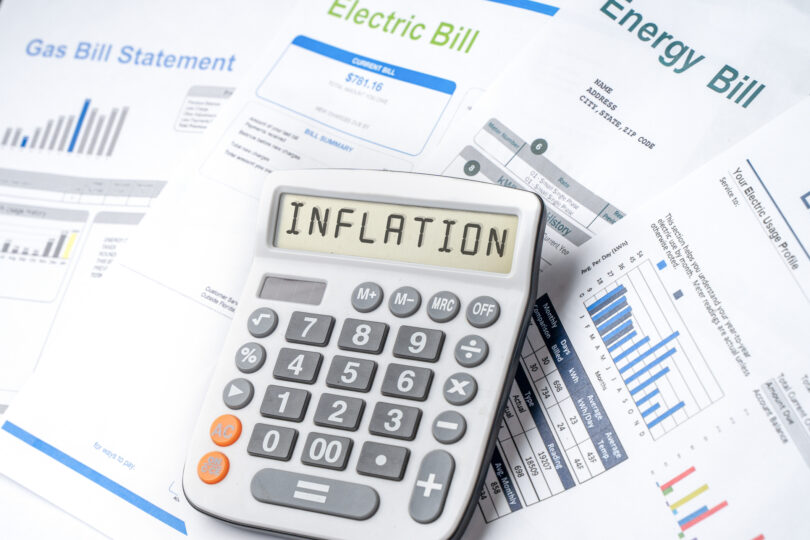The IRA is Starting to Impact America’s Energy Future
The Inflation Reduction Act (IRA) is the largest climate bill ever passed by Congress, as it provides $369 billion in funding for initiatives to reduce carbon emission, increase domestic manufacturing of clean energy products, and advancing environmental justice initiatives. The bill’s climate provisions are also projected to cut domestic carbon emissions by about 40% by 2030 through tax incentives and grants for transportation electrification, building efficiencies, home energy rebates, and renewable energy, along with several other related energy-oriented and climate-focused provisions. This legislation represents the largest single climate investment to date in the USA, and we are starting to see significant changes in our energy industry landscape.
To reach this emission reduction goal, the law includes tax credits for zero-carbon energy production, encourages increased electrification and drives down the cost of renewables to accelerate the clean energy transition. ICF estimates that the revamped production tax credit, without accounting for bonuses introduced by the IRA, could reduce the levelized cost of energy of solar and wind in 2030 by as much as 35% and 49%, respectively. Through a mix of tax incentives, grants, and loan guarantees, the cost reduction of project development will be materialized. Among the beneficiaries of these incentives, clean electricity and transmission command the biggest slice, followed by clean transportation, including electric-vehicle (EV) adoption and promotion.
Even though the IRA was passed only seven months ago, many organizations are taking advantage of the IRA’s wide range of benefits. The law is starting to impact America’s energy future in many positive ways and lead to these notable developments:
More Green Jobs
Since the Inflation Reduction Act was initiated, companies have announced more than 100,000 clean energy jobs across the country, according to a report by the nonprofit Climate Power. The wind, solar and EV manufacturing sectors are creating new positions, which include electricians, mechanics, construction workers and technicians.
The legislation is projected to create more than 9 million clean energy and climate-related jobs over the next decade, according to an analysis by the Political Economy Research Institute at the University of Massachusetts Amherst.
Increased Clean Energy Investments
As of the end of January 2023, companies have announced more than 90 new clean energy projects in small towns and larger cities in the U.S., totaling $89.5 billion in new investments, based on the report developed by Climate Power.
Empower the Tax-Exempt Sector
Prior to the IRA, tax-exempt organizations — including schools, governmental organizations, municipalities, Native American tribes, energy co-operatives, charities, religious organizations, and non-profit organizations — were not able to take direct advantage of solar tax incentives. With Section 6417 of the IRA, tax-exempt organizations can fully monetize solar tax credits.
The new rules refund the tax credit, enabling direct payment of the renewable investment tax credit. This direct payment of the solar energy tax credit equals a cash refund for the value of the tax credit on eligible clean energy projects. With this new mechanism in place, we are now working with tax-exempt organizations, including major colleges and universities, that are receiving increased financial benefits from solar tax credits.
Helping Low-Income Communities
The low-income communities bonus credit program in the Inflation Reduction Act provides a boost of up to 20 percentage points to the investment tax credit (ITC) for solar and wind energy projects in low-income communities. The program seeks to create or provide added financial incentives to create clean energy projects in low-income communities, encourage new market participants, and benefit individuals and communities that have experienced adverse environmental impacts or lacked economic opportunities. These incentives apply to residential and commercial buildings and are already making significant impacts in creating added developer interest in building renewable energy projects from urban and rural areas that are economically challenged.
Community Solar Growth
Community solar developers are well-positioned to take advantage of the new and extended investment tax credits that should continue to fuel the growth of the community solar market across the USA and provide industry-wide benefits. Developers benefit with a scalable way to deploy large distributed solar projects. Landowners or municipalities with land for community solar projects can gain income from solar land leases. Policymakers gain democratizing and revenue-generating benefits, while reducing carbon emissions. End subscriber residents and businesses will gain access to solar virtually with bottom dollar savings.
Businesses, organizations, communities, and energy companies are entering a transformational decade fueled in part by the IRA. Organizations and businesses with sustainability initiatives or emission goals can prepare by updating current plans or energy strategies by taking advantage of the IRA’s money-saving benefits on clean energy resources. To tangibly change our climate future, businesses and civil society organizations can leverage this unprecedented moment to help meet clean energy goals. Talk to an energy professional and learn how your community or organization can benefit.
By: Peter Muzsi, Head of Marketing, Core Development Group



